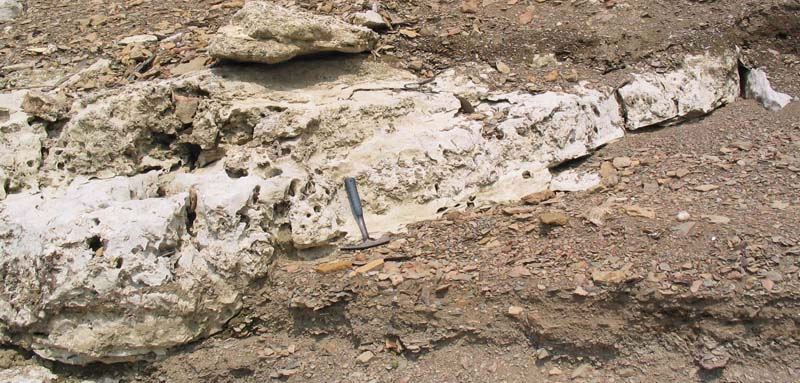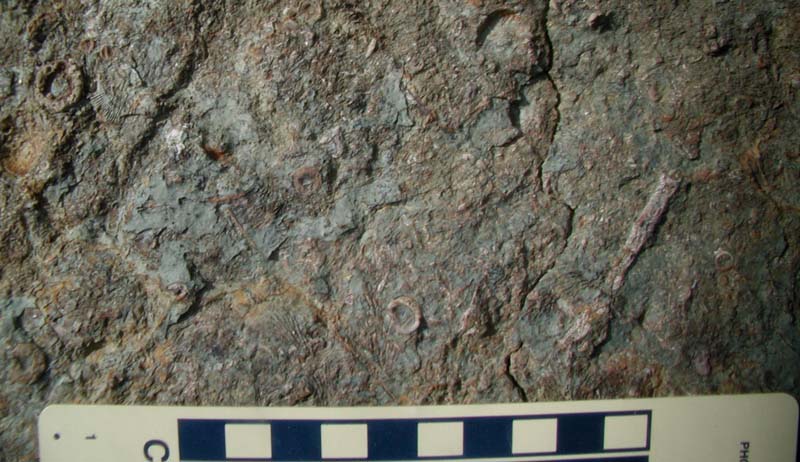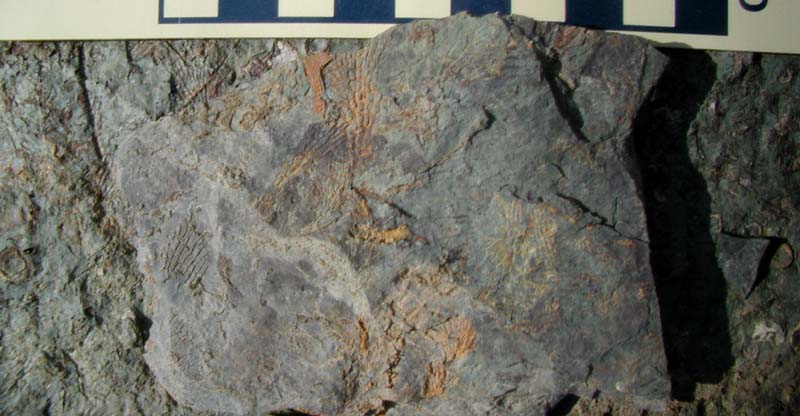

KGS Home > Geology of Kentucky
Green Core Shale, Pleasant Hill Mound

Figure 3. Green core shale of the Pleasant Hill mound at low water level.
Figure 3 shows the convex-up geometry of the green mudstone at the base of the mound, from which the inference of a buildup is developed. The lower part of the core shale is covered by lake sediment at low water, but the upper parts and flanks are well exposed. The contact with the overlying carbonates is sharp (Figs. 3-4), and may be partly scoured downslope on the flanks of the buildup. The mound core is dominated by laminated, glauconitic, fossiliferous shale. Thin dolostones also are interbedded and tend to be iron-stained with abundant crinoidal debris. Crinoids (Fig. 5) and bryozoans (Fig. 6) are abundant throughout the core shale. Both filter-feeding organisms are inferred to have baffled (trapped or stopped) sediment from distal turbidity currents at the toe of the Borden delta to create and maintain mound building (see for example, MacQuown and Perkins, 1982; Ausich and Meyer, 1990; Meyer and others, 1995).

Figure 4. Sharp contact between the green core shale and west carbonate flank of the Pleasant Hill mound at low water level.

Figure 5. Crinoidal debris in green core shale of the Pleasant Hill mound. Scale in centimeters.

Figure 6. Fenestrate bryozoa in green core shales of the Pleasant Hill mound. Scale in centimeters.
Continue to Carbonate Buildup, Pleasant Hill Mound
Back to Fort Payne Formation Field Trip in the Lake Cumberland Region
Back to top of Geology of the Fort Payne Formation